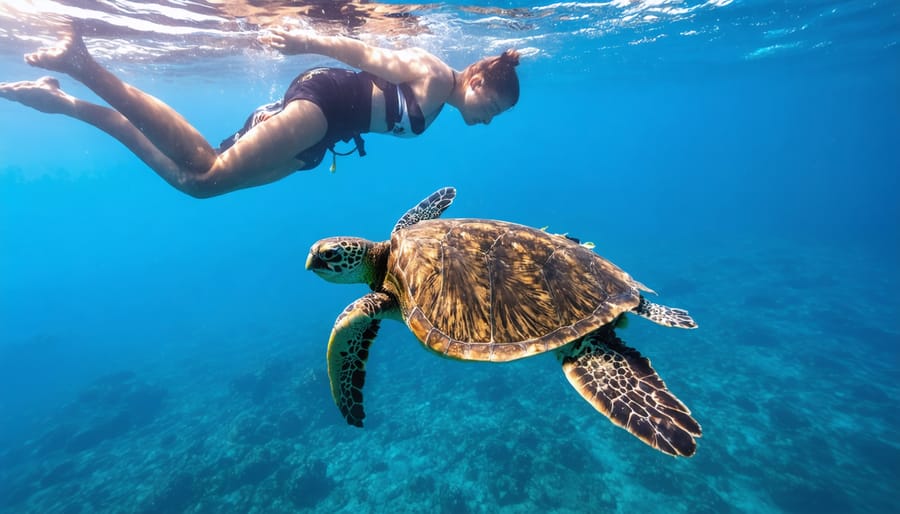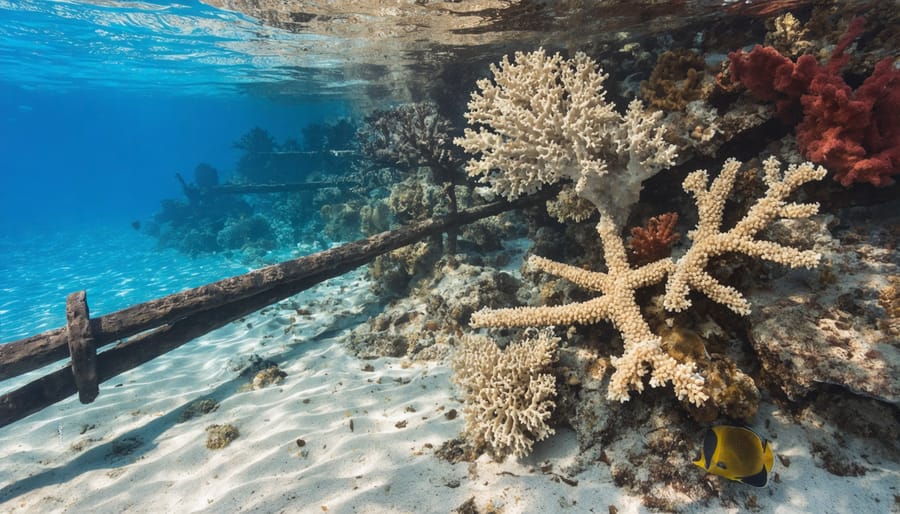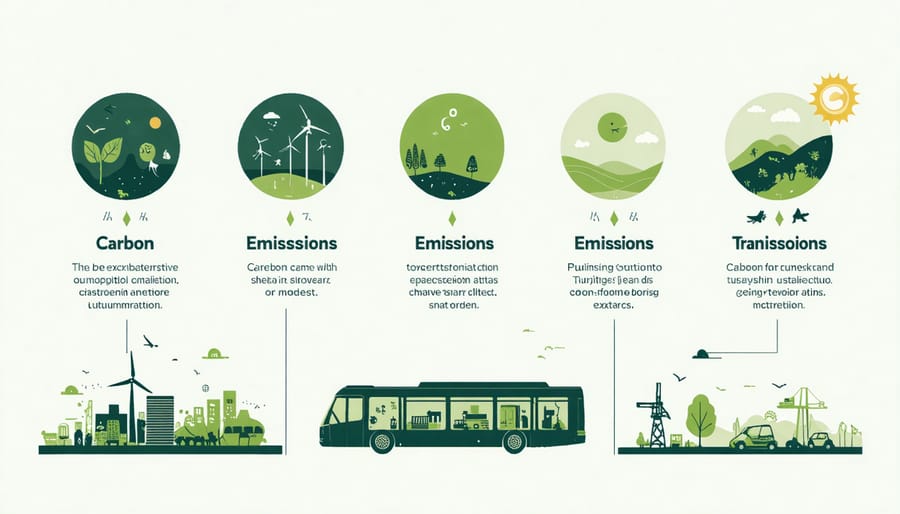
Ecotourism’s promise of sustainable travel masks a complex web of unintended consequences threatening delicate ecosystems worldwide. While marketed as a solution for marine ecosystem conservation and local development, this rapidly growing industry often creates more problems than it solves. From the trampling of fragile coral reefs by well-meaning snorkelers to the displacement of indigenous communities for luxury eco-lodges, the darker side of ecotourism demands urgent attention.
Recent studies reveal that even carefully managed ecotourism sites experience significant environmental degradation, with some protected areas showing up to 35% reduction in native species populations within just five years of opening to tourists. Moreover, the carbon footprint of long-distance travel to remote eco-destinations often outweighs any local conservation benefits, creating a paradoxical situation where efforts to protect nature ultimately contribute to its destruction.
The commercialization of nature through ecotourism raises fundamental questions about our relationship with wild spaces and the true cost of experiencing them. As global tourism continues to expand, understanding these drawbacks becomes crucial for developing more sustainable approaches to conservation and travel. This critical examination of ecotourism’s shortcomings offers insights into how we might better balance our desire to explore natural wonders with the imperative to preserve them for future generations.
Wildlife Behavioral Changes and Stress

Disrupted Feeding Patterns
Tourist activities can significantly disrupt the natural feeding patterns of marine species, creating long-lasting impacts on local ecosystems. When boats and swimmers regularly enter feeding areas, marine animals often alter their natural behaviors to avoid human interaction or, conversely, become dependent on human presence for food.
Many species, particularly dolphins and whales, rely on specific feeding grounds and hunting techniques that have evolved over thousands of years. When tourist boats consistently interrupt these feeding sessions, animals may abandon their traditional feeding areas or miss crucial hunting opportunities. This disruption can be particularly devastating during critical feeding periods, such as when mothers are nursing their young or during seasonal feeding events.
The practice of feeding wild animals to attract them for tourist viewing, though well-intentioned, can create dangerous dependencies. When marine creatures begin associating humans with food, they may lose their natural hunting abilities and become reliant on artificial feeding. This behavior modification can be passed down to offspring, creating generational changes in feeding patterns.
Furthermore, irregular feeding times and inappropriate food choices by tourists can lead to nutritional imbalances and health issues in marine life. Even when tour operators follow guidelines, the mere presence of humans during natural feeding times can cause stress and reduce feeding efficiency, ultimately affecting the animals’ overall health and reproductive success.
To minimize these impacts, many marine conservation experts recommend maintaining greater distances from feeding areas and strictly regulating feeding practices in tourist zones.
Breeding and Migration Impacts
Ecotourism activities can significantly disrupt natural breeding patterns and migration routes of marine species, particularly during critical life cycle periods. When tourists frequent breeding grounds during mating seasons, marine animals may alter their behavior or abandon traditional sites altogether. For instance, sea turtles have been observed avoiding their usual nesting beaches when excessive nighttime tourism activities are present.
The presence of tour boats and human activity can interfere with the acoustic communication patterns of whales and dolphins, potentially affecting their ability to find mates and coordinate group movements. Studies have shown that bottlenose dolphins reduce their feeding time and alter their migration patterns in areas with heavy boat traffic, even when tours follow responsible wildlife viewing guidelines.
In coral reef ecosystems, increased human presence during spawning events can disrupt the delicate timing of mass coral reproduction. The artificial light from coastal tourism developments can disorient both adult sea turtles and their hatchlings, reducing successful reproduction rates. Even well-intentioned wildlife photographers and observers can cause breeding seabirds to temporarily abandon their nests, leaving eggs and chicks vulnerable to predators and harsh weather conditions.
These disruptions can have long-term consequences for population dynamics and species survival. Marine biologists have documented cases where previously thriving breeding colonies have declined or relocated due to persistent tourism pressure, highlighting the need for more stringent regulations during sensitive breeding periods.
Habitat Degradation
Coral Reef Damage
While ecotourism aims to support conservation efforts, increased human activity around coral reefs has led to significant environmental challenges. Snorkeling and diving activities, even when conducted responsibly, can cause inadvertent damage to these delicate ecosystems. Inexperienced swimmers often accidentally kick or touch coral formations, breaking off fragments that took decades to grow.
Tourist boats anchoring near reef systems can cause direct physical damage through anchor drag and chain movement across the coral beds. The increase in boat traffic also leads to higher levels of water pollution from fuel leaks and waste discharge, affecting water quality and coral health.
Marine biologist Dr. Sarah Chen notes that even seemingly harmless activities like applying sunscreen before entering the water can harm coral polyps. Many common sunscreen ingredients, particularly oxybenzone, have been linked to coral bleaching and reproductive damage in marine life.
The surge in tourist numbers has also led to increased coastal development, resulting in sedimentation and runoff that smothers coral colonies. Some popular diving sites now show visible signs of degradation, with reduced coral coverage and diversity compared to protected areas with limited access.
While sustainable tourism practices are being developed, the current volume of visitors to many reef systems exceeds their natural recovery capacity. This creates a concerning paradox where ecotourism, intended to fund conservation, may actually contribute to reef degradation if not carefully managed.

Coastal Environment Changes
Coastal environments face significant pressures from increased ecotourism activities, particularly in sensitive shoreline and shallow water habitats. While well-intentioned, tourist activities can lead to physical damage of coral reefs, seagrass beds, and mangrove forests. Snorkelers and divers, even when following best practices, may inadvertently touch or break fragile coral structures, leading to long-term degradation of these essential marine ecosystems.
The development of tourism infrastructure along coastlines often results in habitat fragmentation and erosion. Construction of resorts, restaurants, and access points can disrupt natural sand movement patterns and destroy crucial nesting sites for sea turtles and shore birds. Without proper marine spatial planning, these developments can permanently alter coastal dynamics.
Water quality degradation is another significant concern, as increased human activity leads to higher levels of sunscreen chemicals, waste discharge, and sediment disturbance in nearshore waters. These pollutants can trigger algal blooms, reduce water clarity, and harm marine life. Even eco-friendly resorts contribute to increased foot traffic on beaches and shallow reef areas, causing compaction of sand and destruction of microhabitats essential for small organisms.
The presence of tourists can also disrupt natural behavioral patterns of coastal species. Regular boat tours and wildlife watching activities may alter feeding, breeding, and migration patterns of marine mammals, sea birds, and fish populations, potentially affecting their long-term survival rates.
Social and Economic Complications
Local Community Displacement
While ecotourism aims to promote conservation, it can inadvertently disrupt traditional coastal communities that have sustained themselves through fishing and local maritime activities for generations. The influx of tourism infrastructure often leads to coastal development that restricts access to traditional fishing grounds and forces communities to relocate from their ancestral lands. This displacement challenges not only their economic survival but also threatens their cultural heritage and traditional ecological knowledge.
In many cases, local fishermen find themselves competing with tourist activities for access to marine resources. Traditional fishing practices may be curtailed or banned entirely to accommodate snorkeling tours or marine protected areas, without adequate consultation or compensation for affected communities. This raises important questions about ethical ocean management and social justice.
The transformation of coastal areas into tourist destinations often leads to increased living costs, making it difficult for local residents to maintain their traditional way of life. While some community members may find employment in the tourism sector, these jobs frequently offer lower wages and less autonomy than traditional fishing activities. The loss of traditional livelihoods can lead to the erosion of cultural practices and traditional knowledge systems that have been vital for sustainable resource management in these regions for centuries.
Economic Dependency Risks
Communities that become heavily dependent on ecotourism revenue face significant vulnerabilities. When local economies shift their focus primarily toward tourism-based income, they become susceptible to various external factors beyond their control. Natural disasters, global economic downturns, changing travel trends, or health crises can dramatically impact visitor numbers, leaving these communities financially exposed.
Many coastal communities have witnessed this firsthand, where traditional livelihoods like fishing or agriculture were gradually abandoned in favor of tourism-related jobs. During off-peak seasons or unexpected disruptions, these areas often struggle with unemployment and economic instability. The COVID-19 pandemic particularly highlighted this vulnerability, as numerous ecotourism-dependent regions faced severe economic hardship when international travel ceased.
This overdependence can also create a cycle of economic pressure that may compromise conservation goals. When communities rely solely on tourism revenue, they might feel compelled to prioritize short-term profits over long-term environmental sustainability. For instance, some areas might exceed their ecological carrying capacity by permitting too many visitors or developing excessive infrastructure to accommodate growing tourist demands.
To build resilience, communities need to maintain diverse economic activities alongside ecotourism, ensuring they have alternative income sources during challenging times.
Environmental Footprint
Transportation Emissions
While ecotourism aims to promote environmental conservation, the transportation required to reach marine destinations often creates a significant carbon footprint that counteracts these benefits. Most marine ecotourism sites are in remote coastal areas or islands, requiring tourists to travel long distances by air, which is particularly carbon-intensive. A single long-haul flight can generate several tons of CO2 emissions per passenger, contributing substantially to global warming and ocean acidification.
Cruise ships, often marketed as eco-friendly ways to experience marine environments, are major polluters. These vessels typically burn heavy fuel oil, producing substantial amounts of greenhouse gases and other pollutants. A large cruise ship can emit as much particulate matter as one million cars every day, while also releasing other harmful substances into marine ecosystems.
Even local transportation at destinations adds to the problem. Smaller boats used for wildlife viewing tours, diving expeditions, and island hopping consume considerable amounts of fuel. While some operators are transitioning to more efficient engines or alternative energy sources, the majority still rely on traditional fossil fuels.
The irony lies in how travel-related emissions contribute to the very problems ecotourism aims to address, such as coral bleaching, changing marine migration patterns, and rising sea levels. This creates a complex challenge: how to balance the educational and conservation benefits of marine ecotourism against its environmental impact through transportation emissions.

Waste Management Challenges
The surge in ecotourism activities has created significant waste management challenges in marine environments, particularly in remote and sensitive coastal areas. Popular diving sites and marine parks face mounting pressure from increased visitor numbers, leading to problems with trash disposal and sewage management.
Marine biologists have observed concerning trends where single-use plastics, food packaging, and other non-biodegradable materials accumulate in these delicate ecosystems. Even eco-conscious tourists generate waste, and many destinations lack adequate infrastructure to process this additional burden sustainably. Small island destinations are especially vulnerable, as they often have limited waste processing facilities and face challenges in transporting waste to mainland disposal sites.
The impact extends beyond visible waste. Many ecotourism operations struggle with proper sewage treatment, particularly on boats and in remote locations. This can lead to nutrient loading in marine environments, potentially triggering algal blooms and disrupting local ecosystem balance. Some locations report up to a 40% increase in waste volume during peak tourist seasons.
Despite implementing “pack in, pack out” policies and waste reduction initiatives, many sites struggle to maintain effective waste management systems. The cost of implementing proper waste management infrastructure often exceeds the revenue generated from ecotourism activities, creating a challenging cycle where environmental protection measures cannot keep pace with tourist impact.
These challenges highlight the need for more sustainable approaches to marine ecotourism, including better infrastructure planning and stricter waste management protocols.
While ecotourism presents significant challenges, it remains a valuable tool for marine conservation when properly managed. The key lies in striking a delicate balance between tourism development and ocean conservation ethics. To address these challenges, stakeholders must implement stronger regulations and monitoring systems, focusing on carrying capacity limits and environmental impact assessments.
Tourism operators can adopt more sustainable practices by investing in eco-friendly technologies, providing comprehensive staff training, and developing educational programs that truly engage visitors. Local communities should be empowered through participatory decision-making processes and fair revenue-sharing arrangements.
Successful models exist worldwide, demonstrating that responsible marine tourism is possible. For instance, some destinations have implemented rotating visitation schedules to allow ecosystem recovery, while others have established strict guidelines for wildlife interactions and waste management.
Moving forward, the industry should prioritize:
– Development of certification standards specific to marine ecotourism
– Implementation of advanced monitoring technologies
– Creation of community-led conservation initiatives
– Investment in scientific research to better understand tourism impacts
– Enhancement of visitor education programs
By acknowledging these challenges while working towards solutions, we can transform marine ecotourism into a more sustainable practice that benefits both local communities and marine ecosystems. The future of marine conservation depends on our ability to balance tourism demands with environmental protection.
jessica
Ava Singh is an environmental writer and marine sustainability advocate with a deep commitment to protecting the world's oceans and coastal communities. With a background in environmental policy and a passion for storytelling, Ava brings complex topics to life through clear, engaging content that educates and empowers readers. At the Marine Biodiversity & Sustainability Learning Center, Ava focuses on sharing impactful stories about community engagement, policy innovations, and conservation strategies. Her writing bridges the gap between science and the public, encouraging people to take part in preserving marine biodiversity. When she’s not writing, Ava collaborates with local initiatives to promote eco-conscious living and sustainable development, ensuring her work makes a difference both on the page and in the real world.
